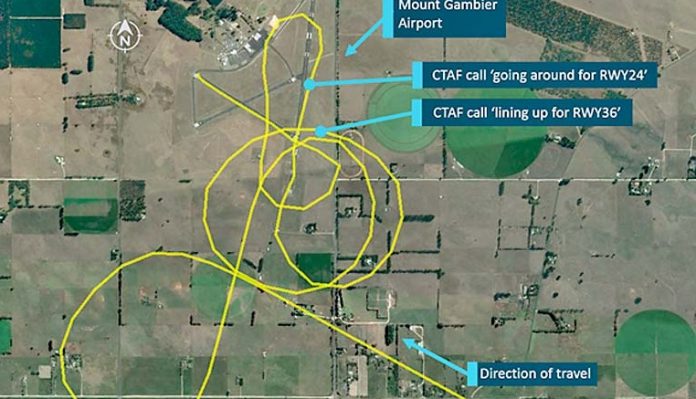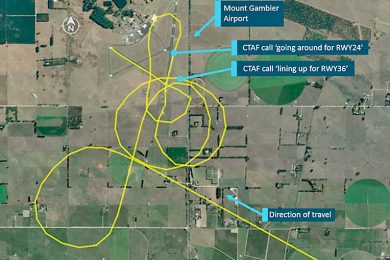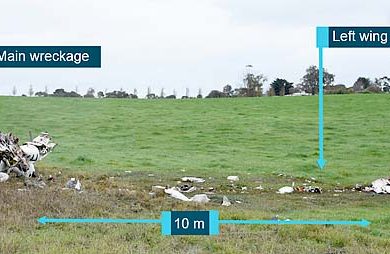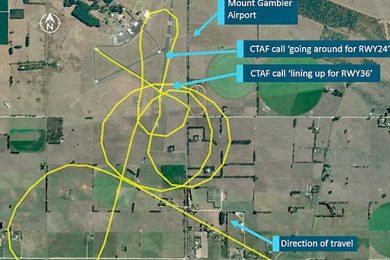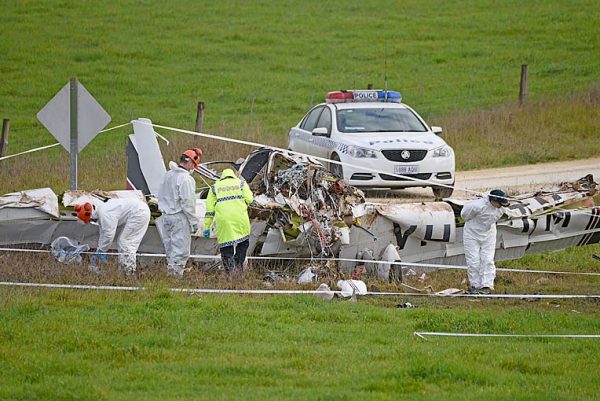
ANGEL Flight has a fatal accident rate “seven times” higher than other private operations, according to the final report into the 2017 Mount Gambier crash.
Following a two year probe, the Australian Transport Safety Bureau (ATSB) yesterday released its report into the accident that claimed the life of Mount Gambier mother Tracy Redding, 43 and daughter Emily, 16.
The devastating crash also claimed the life of Mount Barker volunteer pilot Grant Gilbert, 78.
The SOCATA TB-10 Tobago light aircraft nose-dived into a paddock near Mount Gambier Regional Airport on June 28, 2017.
The plane was en route to Adelaide to transport Emily to a medical treatment appointment.
According to the report, shortly after take-off the aircraft entered low-level cloud – estimated to be about 200 feet above ground level – and the pilot probably became “spatially disorientated, resulting in a loss of control of the aircraft”.
The pilot was not qualified to fly in other than visual conditions.
About 70 seconds after take-off, the aircraft collided with the ground.
The ATSB has now issued a formal recommendation that Angel Flight consider paying for commercial flights where available.
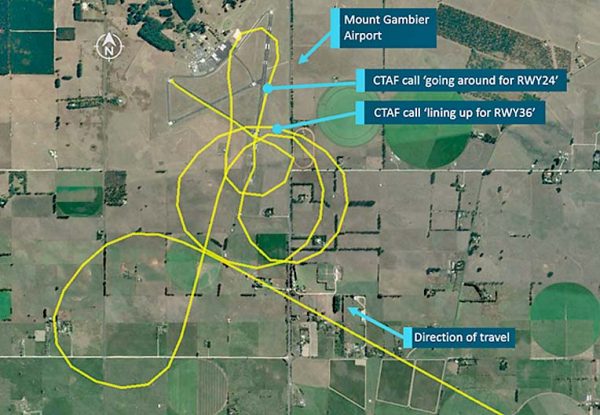
On the day of the Mount Gambier accident, suitable and cost-comparative airline flights were available, according to the report.
ATSB chief commissioner Greg Hood said people using Angel Flight services were being exposed to a higher risk.
“… our analysis of the circumstances of this tragic accident highlights that passengers on Angel Flight community service flights and indeed their volunteer pilots, are being exposed to much higher levels of risk compared with other types of aviation operations,” Comm Hood said.
The ATSB investigation showed the rate of safety occurrences – which could be pre-cursors of fatal accidents – was “substantially” higher for passenger-carrying Angel Flight operations compared to other private operations.
This is due to pilots operating community service flights on behalf of Angel Flight being exposed to additional operational risk factors.
“Angel Flight did not pressure pilots to fly in conditions beyond their capability, but some circumstances can lead a pilot to feel pressure anyway, such as the responsibility to fly unrelated ill passengers to meet medical deadlines,” Comm Hood said.
“This can lead to degraded decision making under high-pressure situations, like when confronted with poor weather,” Comm Hood said.
He noted on the morning of the Mount Gambier accident, two regional airline flights into Mount Gambier were delayed due to the poor weather.
The ATSB’s analysis determined pilots flying on behalf of Angel Flight were more likely to make operational errors compared with other private operations, particularly associated with flight preparation and navigation, airspace, runway events and communications breakdowns.
Earlier ATSB research has already established that private flying has a fatal accident rate per flight that is eight times higher than commercial charter operations and 27 times higher than low-capacity scheduled airline flying.
There have been no fatalities involving a high capacity airliner in Australia in more than 40 years.
“This investigation has shown that those conducted for Angel Flight are actually less safe than other private operations, let alone charter and scheduled airline flying,” Comm Hood said.
“Given the factors identified for the accident at Mount Gambier and previously with another Angel Flight fatal accident in 2011, supported by the differences identified in the analysis of safety occurrences and consistent with findings from investigations of similar organisations in the United States, the ATSB considers that measures must be undertaken to improve existing risk controls,” Comm Hood said.
The ATSB has commended Angel Flight for initiating some pro-active action on a number of the investigation’s identified safety issues.
“The ATSB is supportive of the community service flight sector, however, based upon the analysis conducted, it is essential the controls for risk are strengthened to prevent further accidents,” Comm Hood said.


